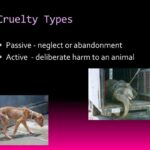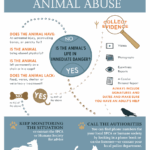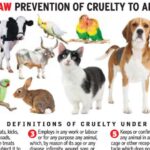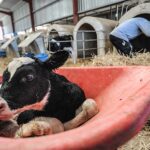Animal cruelty is a grave concern that shadows our society, manifesting itself in a myriad of forms. Each type of cruelty composes a sinister symphony of suffering, echoing through the lives of countless innocent beings. It ranges from passive neglect—a silent erosion of care—to overt acts of violence that resonate with malicious intent. Understanding the different forms of animal cruelty ensures that we are better equipped to identify and combat these stark realities.
At first glance, one might perceive cruelty as an evidenced brutality, but the truth is far more complex. It unfolds in layers, intricately woven into the fabric of daily life, often slipping beneath the radar until it has wrought irreversible damage. The manifestation of cruelty can be categorized into two broad realms: passive neglect and intentional harm.
Passive Neglect: The Silent Erosion of Welfare
Passive neglect stands testament to a different kind of cruelty—one that is often overlooked, yet equally pernicious. This form reveals itself in the absence of necessary care. Imagine a leaf that slowly withers away without sunlight or water; this analogy encapsulates the plight of neglected animals. The indifference of their caretakers acts as a suffocating blanket, shrouding them in an unyielding darkness.
Among the most common types of passive neglect is inadequate shelter. Animals left exposed to the ravages of the elements—harsh winters, scorching summers—experience a slow disintegration of their spirits. Their bodies, ravaged by external conditions, cry out in silence. Much like an artist’s work left unfinished, their potential for joy and vitality is overshadowed by the heartbreaking reality of abandonment.
Moreover, lack of food and water represents another facet of neglect. The stomach growls with a hollow echo, akin to the haunting void of an abandoned structure. Animals deprived of sustenance become mere shadows of their former selves, their energy siphoned away, leaving only frail bodies that struggle to exist. This, unfortunately, is not merely a failure of caregivers but a profound societal oversight, where complacency has taken root.
Furthermore, neglect can manifest as a failure to provide medical care. An animal suffering from illness or injury, denied treatment, endures a painful existence. Picture a vibrant flower wilting under the duress of a drought, yearning for the nourishments it needs to blossom. These animals often embody the same fervor for life, tragically stymied by their preventable ailments.
Intentional Harm: The Dark Abyss of Cruelty
In stark contrast lies intentional harm, a realm that delves into the darkest corners of human malice. This is where cruelty takes on its most grotesque forms, embodying the malevolence that can reside in the human psyche. The manifestation of this brutality ranges from physical violence to psychological torment, each act rippling through the animal world like a heavy stone tossed into still waters.
The most prevalent example of intentional harm is abuse, encompassing acts of beating, torturing, or otherwise inflicting pain on an animal. These actions are not mere outliers; they reflect a societal illness that permits such barbarity to persist. To the untutored eye, these acts are downright unfathomable. How can one find it within themselves to bow to such depravity? The psychological imprint left on both the abuser and the victim illuminates the grim reality that exists beyond societal façades.
Equally disturbing are forms of exploitation, such as puppy mills and factory farming, where animals are commodified rather than cherished. In these settings, the pursuit of profit supersedes empathy. Animals are crammed into overcrowded spaces, deprived of the opportunity to engage in natural behaviors. Their existence becomes a tragic narrative, where joy is cast aside in favor of economic gain. Imagine the mechanical clattering of a factory; the stark irony is that animals are seen as products rather than sentient beings.
Additionally, abandonment constitutes a poignant form of intentional harm. When individuals choose to sever their bond with an animal, they inflict an emotional wound that reverberates deeply within the animal’s psyche. In essence, abandonment symbolizes the ultimate betrayal—a dialogue unspoken, yet felt in every heartbeat.
Awareness and Action: The Call for Change
The prevalence of animal cruelty in its many forms beckons us to act. Awareness serves as the first step towards dismantling these insidious patterns. We, as a society, must cultivate a consciousness that recognizes both passive and intentional cruelty. This heightened awareness can lead to active engagement—be it through education, reporting neglect, or advocating for stiffer penalties for offenders. Knowledge is a powerful catalyst for change.
Furthermore, fostering empathy and compassion can illuminate even the darkest corners of animal suffering. Educating communities about proper animal care and the consequences of neglect can transform how we perceive and treat our fellow beings. It is crucial to ignite a dialogue that speaks for those that cannot—encouraging conversations that prioritize animal welfare as a collective moral obligation.
In conclusion, animal cruelty manifests itself in myriad and complex forms—each as destructive as the last. Understanding the duality of passive neglect and intentional harm enables a more comprehensive approach to combat animal suffering. As empathetic advocates, we must seek to shed light on this nefarious plight. The silence is deafening, and it is our responsibility to be the voice that resonates against the cruelties endured by our fellow creatures. Only through concerted effort can we hope to build a world where every animal can bask in the warmth of safety and love, free from the shadows of cruelty.







